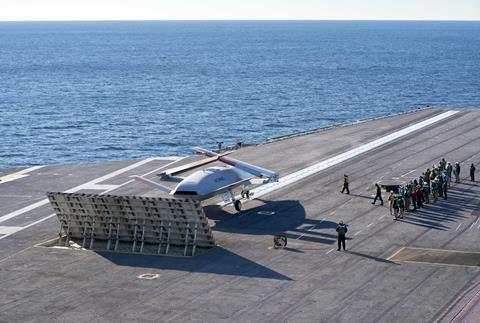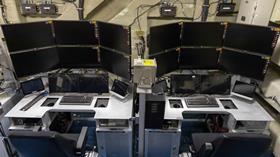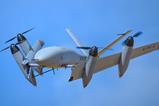The first unmanned aircraft control station has been fitted in a US Navy (USN) aircraft carrier – a major milestone in the service’s journey to integrate uncrewed jets into the carrier air wing.
The Naval Air Systems Command said on 15 August it completed installation of the first MD-5E ground control station (CGS) aboard the USS George HW Bush, where it will be used to control the forthcoming Boeing MQ-25 Stingray autonomous refuelling jet.
The GCS, which was developed for the navy by Lockheed Martin, will form the heart of a new Unmanned Air Warfare Center (UAWC) onboard the Bush, with the Stingray being the initial target for operations.
“These systems will initially support the MQ-25, but also future unmanned systems such as collaborative combat aircraft,” says Captain Daniel Fucito, the USN’s programme manager for unmanned carrier aviation systems.
Although the MQ-25 is designed to launch, fly its pre-loaded missions and return to the carrier autonomously, the navy says the GCS will be “critical” to the uncrewed refueller’s operations – controlling the tanker jet from the aircraft carrier.
Boeing is also testing software that would allow the MQ-25 to be controlled by F/A-18 pilots while airborne.

The USN has already established its first Unmanned Carrier-Launched Multi-Role Squadron at NAS Patuxent River, Maryland to oversee the training of ground-based MQ-25 operators – which the navy has dubbed “Air Vehicle Pilots”, despite the autonomous nature of the Stingray. Operators are to monitor the aircraft rather than directly control flight.
The MQ-25 represents the first uncrewed aircraft planned for operational service on USN aircraft carriers. With a planned fleet of 76 aircraft, the navy will use the Stingray to provide air-to-air refuelling support to its carrier-based fighter squadrons.

That role is currently filled by the F/A-18E/F Super Hornet, which requires diverting one of the strike fighters from availability for combat sorties.
“The MQ-25 system is designed to change the carrier air wing at its core and change the way the navy fights, increasing the lethality of the air wing and carrier strike group,” Emily Mooren, commander of the navy’s MQ-25 training squadron, said in February.
Boeing delivered the first Stingray example – a ground-based test article – to the USN in March. The company currently assembles Stingrays within its F-15EX assembly site near St Louis Missouri, where flying MQ-25 aircraft are currently in production.
Boeing is nearing completion on a new assembly facility dedicated solely to the MQ-25, expected to open this year in nearby Mascoutah, Illinois.
Under the latest procurement schedule, the USN plans to reach initial operational capability on the MQ-25 fleet in the second half of 2026 – with 13 aircraft delivered.
The navy carried out deck handling tests using a Boeing-owned MQ-25 in 2021, also aboard the Bush. According to the service, that ship will also lead sea trials for the new UAWC starting in early 2025. A simulated CGS test was held aboard the aircraft carrier USS Abraham Lincoln in January.
Using the company-owned demonstrator, Boeing has already proven the ability of the MQ-25 to top-up three carrier-based aircraft: the F/A-18, Lockheed F-35C and Northrop Grumman E-2D Hawkeye.































